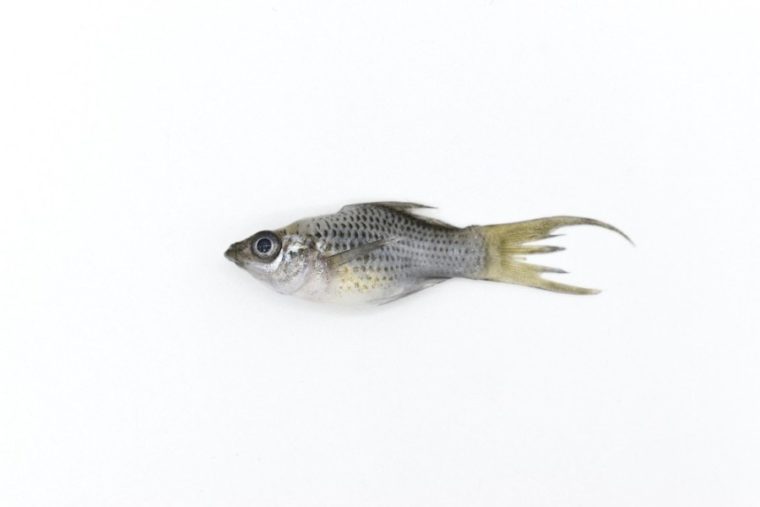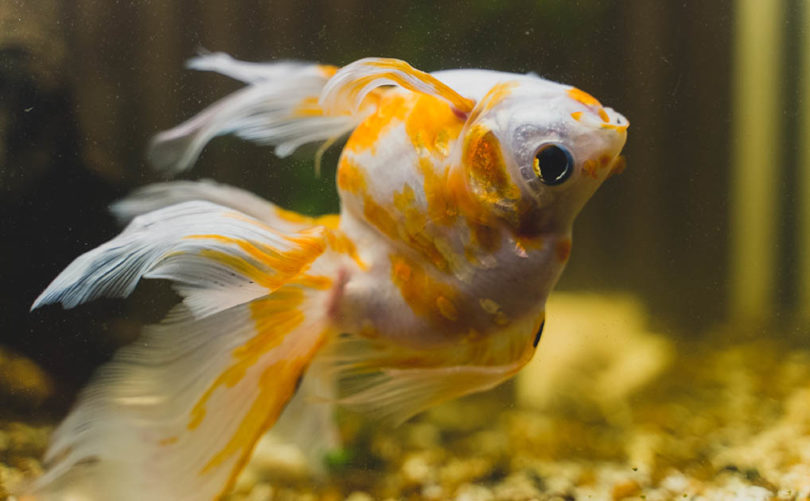
Goldfish have beautiful fins that come in a variety of shapes and lengths. They can add a great deal of interest to your tank, and it can be extremely fun to watch your goldfish swaying their fins as they rush around the tank scavenging or begging for food.
However, fin rot is a real issue for many goldfish that can lead to a partial or complete loss of fins. Without treatment, fin rot can even lead to susceptibility to other infections and even death, so it’s important to identify it early and begin treatment, as well as understanding what causes Fin Rot so you can prevent it in the future.
What is Fin Rot?
Fin rot is actually not a disease. Rather, it is a symptom of a disease or other underlying problem. Most frequently, fin rot is caused by stress from environmental factors, poor water quality, and inappropriate water temperatures. Stressors like bullying, overcrowding, and handling of the fish can lead to fin rot, as can overfeeding and feeding food that is out of date that has lost its nutrient content. Fin rot can even be caused by an injury to the fin getting infected from pathogens in the tank water.
If you are looking for help to get the water quality just right for your goldfish family in their aquarium, or just want to learn more about goldfish water quality (and more!), we recommend you check out the best-selling book, The Truth About Goldfish, on Amazon today.
It covers everything from water conditioners to tank maintenance, and it also gives you full, hard copy access to their essential fishkeeping medicine cabinet!
Symptoms
Fin rot presents as a ragged appearance to the fins as if they have been torn or shredded. This will worsen over time, and the fins will take on a white or red edge in the areas where the fins are compromised. You may notice your goldfish flashing or rubbing against the sides of the tank or the tank décor to ease their fin discomfort.
Don’t be confused between a white edge and white areas on the fins that are patchy or fuzzy in appearance. Some fungal infections can lead to rotting of the fins, but they will take on the distinct appearance of a fungal infection with fluffy patches on the fins. The fluffy patches may be confined to areas where the fins are compromised or they may cover large swaths of the fins.

Treatment
To treat fin rot, you first need to identify the cause of the problem. Check your water temperature and parameters, ensure your food has not expired, your tank is receiving adequate filtration and aeration, and bullying is not occurring in the tank.
Stress from other infections can cause fin rot as well, so it may need to be treated with an antibiotic to ensure there is not an underlying infection, especially if you are not able to identify anything wrong within the tank or with the water quality. Pseudomonas, Aeromonas, and Vibrio are the most common bacteria that lead to fin rot. These are gram-negative bacteria, so a gram-negative antibiotic, like erythromycin, gentamicin, and kanamycin are all effective against these bacteria. When used in the tank, they may wipe out your beneficial bacteria, so take this route with caution.
Aquarium salt added to the tank or used as a bath can be beneficial against fin rot. Keep in mind that aquarium salt will not evaporate with tank water and must be removed with water changes. Don’t keep adding more aquarium salt to your tank without performing water changes first.
Prevention

Prevention is the key to defeating fin rot for good. Work hard to identify the cause of the fin rot your fish is experiencing. Check your water parameters, ensuring the tank has no ammonia or nitrites, nitrate levels below 40 ppm, a neutral pH, and a temperature between 60–75°F.
Ensure your fish food is still in date. Most dry fish foods are only good for 6 months up to 1 year after opening. If you are feeding gel food, then it’s typically good for less than 2 weeks in the refrigerator once mixed. Frozen foods last much longer than anything else, but they do still have expiration dates and may lose nutrients over time.
Aim to keep your tank from being overstocked and only stock it with appropriate tank mates for your goldfish. Watch for fin nipping and bullying within the tank. Breeding behavior can also cause great stress for fish, especially the female, so separate your fish if needed. If your tank is overstocked but with no behavioral issues, make sure you are using a filtration system that is rated for a tank larger than the one that you have and that your fish feel safe and comfortable.
In Conclusion
Many people see the symptoms of fin rot and are unaware that it is a symptom of an underlying problem, not a disease itself. Sometimes, fin rot can lead to permanent loss of fins. If there is an underlying infection leading to the fin rot, then it’s possible for your fish to die if not properly treated.
Start working to identify the cause as soon as you notice the symptoms of fin rot in your goldfish. Treat the cause and only use antibiotics as a final effort since they can reset the biological filtration within your tank. Aim to maintain high water quality and feed high-quality food that is within date to ensure maximum health and longevity for your goldfish.
Featured Image Credit: Zay Nyi Nyi, Shutterstock









